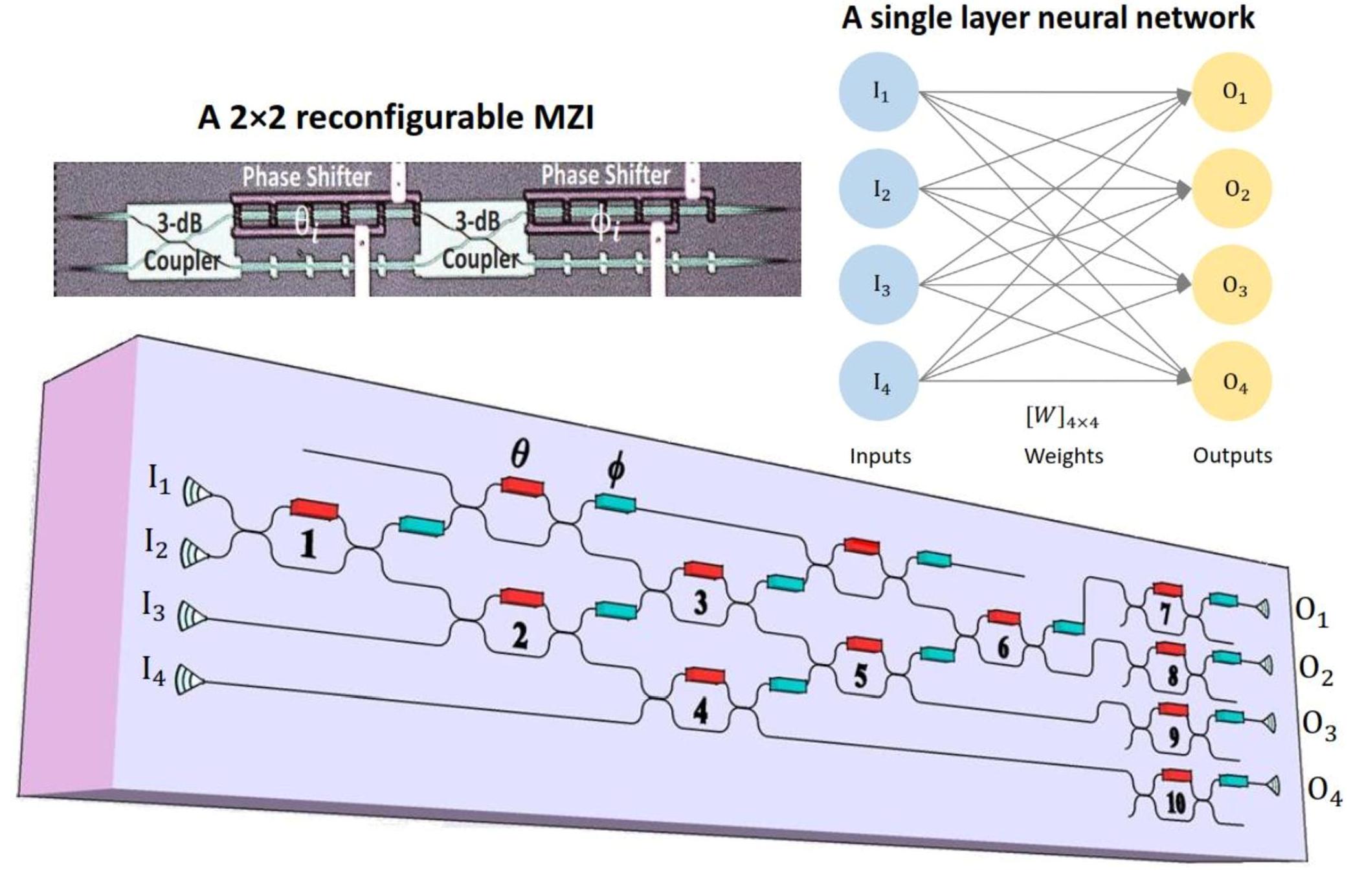INVERSE DESIGN METHODOLOGY
Students: Guowu Zhang, Masnad Mahadi, Dusan Gostimirovic
In this project, we have a collaboration with National Research Council Canada (NRC) to develops advanced inverse design algorithms. In one of other recent work, we propose to apply energy constriant for topological-based inverse design. In our approach, the energy constraint directs the optimization process to solutions that best contain the optical field inside the waveguide core medium, leading to more robust designs with relatively larger minimum feature size. The proposed constraint is unique in simultaneously taking both geometry and electric field into account, opening the door to new ideas and insights to further improve the computationally intensive topology-based optimization process of nanophotonic devices. If you are interested, please check our latest publication for detail!
VCSEL-MMF LAUNCH OPTIMIZATION FOR NEXT GENERATION TRANSMISSION
Student: Shanglin Li
Recently, the fast development of cloud computing, big data, and Internet of Things (IoT) puts higher demands on high-speed data center communications. Vertical-cavity surface emitting laser (VCSEL)-multimode fiber (MMF) links dominate the interconnect within the data center because of their low cost and high energy efficiency. Considering mode selective excitation has superior performances in cost and power consumption, it is exceptionally promising and potential to optimize the MMF-VCSEL link. In this research, we tune the beam launch condition between the VCSEL and the MMF to selectively excite the guided MMF modes. As a result, the performance of the VCSEL-MMF link is significantly improved, which benefits the next-generation data centers.
Please take a look at our recent publications for more details.
SiPh/BiCMOS CO-DESIGN
Students: José Garcia-Echeverria
Content to be included soon.
AN RF ANTENNA IN SILICON PHOTONICS
Students: Ajaypal Singh Dhillon
In this project, we design and measure of a 15 GHz monopole antenna implemented in silicon photonics for inter-chip communication. The antenna is designed in HFSS with its radiation pattern simulated. To confirm its operation and experimentally demonstrate inter-chip communication, the antenna is fabricated in a commercial Silicon Photonics fabrication process. Measurements include s-parameter using a vector network analyzer, and inter-chip data transmission between two on-chip antennas. The inter-chip data transmission is demonstrated using an off-chip photodetector directly as a transmitter as a proof-of-concept. Results indicate the feasibility of a monolithically integrated photodiode-antenna system as a transmitter.
Read our paper on this antenna here.

Photonics for Switching
A promising approach to advance towards energy efficient data centers is to migrate from electronics to photonics. Conventional data centers utilize electronic switches for routing the data. The major drawbacks with these switches are high-power consumption, low network scalability, and large latency. To address these issues, researchers suggested replacing electronic switches with the optical ones that offer wider bandwidth, lower latency, and lower power consumption data communication. However, optical technologies are traditionally designed for telecommunication applications and thus require significant modifications and reengineering to be deployed within a data center. In a joint project in collaboration with
Rockport Inc., our main objective is to design and fabricate high radix optical switches (i.e., large port count), which are the most in-demand devices in data center applications.
Energy Efficient Mode switch for Mode Division Multiplexing
Mode Division Multiplexing (MDM) is of great interest since it utilizes one laser source to modulate all the channels. This helps reduce the power consummation compared with other multiplexing techniques. To makes MDM systems more flexible, the multimode switch is of great importance since it could switch between different mode channels. In a joint project in collaboration with Professor Daoxin Dai (Zhejiang University, China)., our main objective is to design and fabricate low power consumption and energy-efficient mode switches (i.e., higher order modes), which are the most in-demand devices in MDM based optical interconnect.
Please take a look at our recent publications on Photonics for MDM switching.
Reconfigurable MZI-based linear optical processor
Students: Mohammad Reza Safaee Ardestani, Hasan Houji
A 4×4 MZI-based linear optical processor implementing the weight matrix [W] of a single layer neural network.
The interest in reconfigurable multiport linear optical interferometers is growing rapidly, due to their high speed and low power consumption, thanks to the inherent parallelism in optics. The interesting property of such structures is that they can be experimentally configured through theoretical analysis. The phase shifters in such a mesh of MZIs allow for its simple experimental configuration which makes the structure suitable candidate to serve as a reconfigurable linear optical processor. The optical processor can be programmed to implement the linear transformation matrix of a given application using the required phase shifts determined through the theoretical analysis of the structure. Consequently, the structure can be exploited to efficiently perform complex linear computational functions such as matrix multiplications which are a requirement in many applications such as in neural networks. In this sense, optical Neural networks have recently been in the focal of interest due to their high potential to increase the speed of computations in modern computers.






